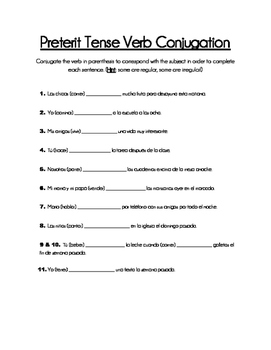


Although this form of tú is not considered correct according to traditional grammars, it is found across Latin America and is seen as a hypercorrection as tú forms in all other tenses end in – s (ex. Some Spanish speakers add an – s to the tú form in the preterite, as seen in the example below. Y eso es lo que hice, trabajé un año y medio.Īnd that is what I did, I worked for one year and a half.įor more information about the uses of the preterit and comparisons with the imperfect see also the page about narration. They told me that I had to finish high school. Me dijeron que tenía que acabar high school. September 16th was a great celebration in Mexico because it is Independence Day. saber: sup e, sup iste, sup o, sup imos, sup ieronĮl dieciséis de septiembre fue una gran celebración en México porque es el día de la independencia.poner: pus e, pus iste, pus o, pus imos, pus ieron.poder: pud e, pud iste, pud o, pud imos, pud ieron.caber: cup e, cup iste, cup o, cup imos, cup ieron.traer: traj e, traj iste, traj o, traj imos, traj eron.conducir: conduj e, conduj iste, conduj o, conduj imos, conduj eron.traducir: traduj e, traduj iste, traduj o, traduj imos, traduj eron.producir: produj e, produj iste, produj o, produj imos, produj eron.decir: dij e, dij iste, dij o, dij imos, di jeron.tener: tuv e, tuv iste, tuv o, tuv imos, tuv ieron.estar: estuv e, estuv iste, estuv o, estuv imos, estuv ieron.andar: anduv e, anduv iste, anduv o, anduv imos, anduv ieron.


It is used for completed actions in the past. The preterit ( pretérito) is one of the two simple past tenses in Spanish. Preterit forms from the Spanish in Texas Corpus Comparisons and Superlatives with Adjectives.


 0 kommentar(er)
0 kommentar(er)
